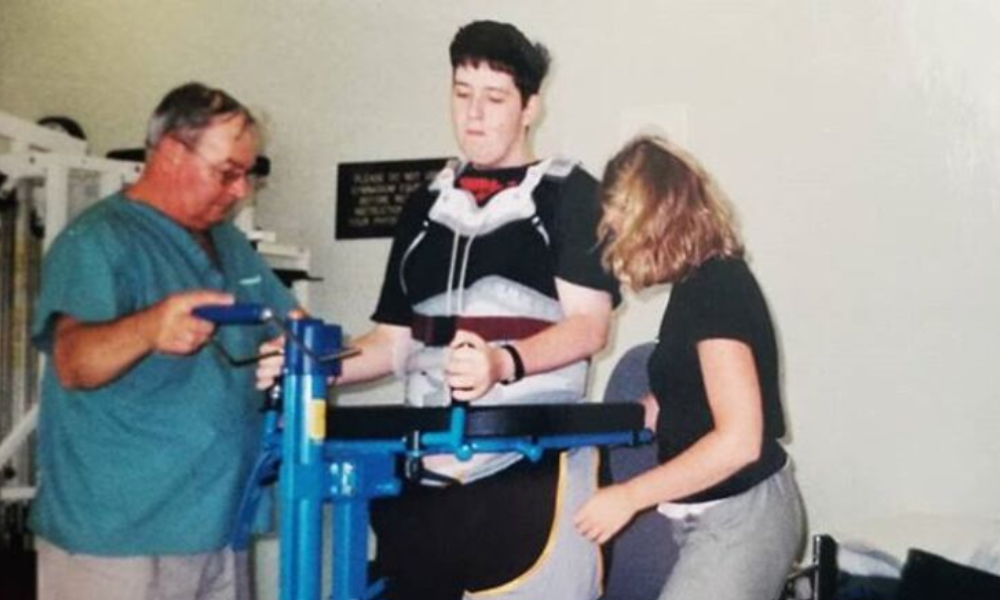Check out our picks for the most comfortable work boots. Find out how they help protect the feet against injury and promote foot health
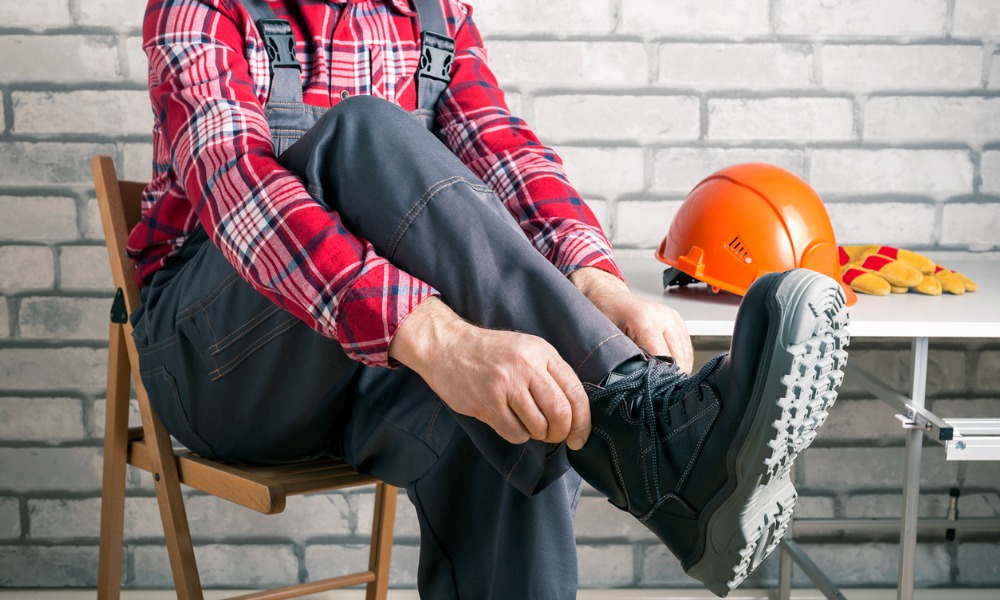
Work boots play an important role in maintaining the health and safety of workers on the jobsite. A good pair of safety boots not only protects the feet from various worksite hazards, it also helps promote good foot and back health.
In this article, Canadian Occupational Safety lists our choices for the most comfortable work boots for construction and industrial tasks. We will discuss the type of protection these types of footwear provide and what makes them best suited for the jobsite.
If you’re searching for the right foot protection for your team, this guide can give you options. Take your pick from our list of the most comfortable safety boots designed for physically demanding jobs.
What are the most comfortable work boots for construction and industrial tasks?
What makes a pair of work boots best suited for the jobsite is the type of protection and level of comfort it provides. The items on our list come with unique features that keep the feet healthy and protected. Depending on the task, one pair may be a better fit than the other. That’s why the list is arranged alphabetically.
Here are our picks for the 10 most comfortable work boots for construction and industrial worksites. All prices are current as of June 26, 2024.
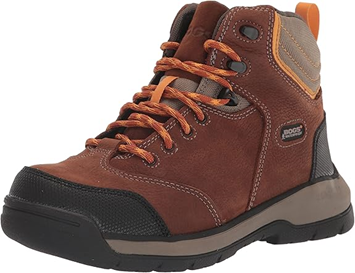
1. BOGS Bedrock II work boots
Key features: Cushioned insoles, slip-resistant outsoles, waterproof leather uppers
Sizes: 7.5 to 15
Price range: $179.95 to $229.99
The Bedrock II safety boots from BOGS are so lightweight, they feel like a pair of hiking shoes. The protective footwear’s cushioned insoles massage the feet while the cemented outsoles provide a snug fit. These features make the Bedrock II among the most comfortable work boots on our list.
The shoes use moisture-wicking and odour-fighting technology to keep the feet dry. The leather uppers make the footwear 100% waterproof. The asymmetric composite toes are custom built for each size.
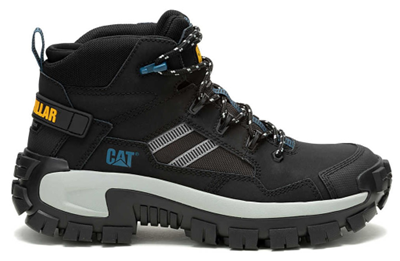
2. Caterpillar Invader Mid Vent work boots
Key features: Slip-resistant outsoles, engineered footbed, electrical hazard protection
Sizes: 7 to 14
Price range: $160.14 to $360.74
The hiker-inspired Invader Mid Vent work boots from Caterpillar combine style, comfort, and safety. The footwear comes with slip-resistant outsoles, offering reliable grip on surfaces with low traction. The lightweight EVA midsoles and engineered footbed provide all-day comfort. The safety shoes have a composite toe that protects against impact and compression. They also meet safety standards for electrical hazard protection.

3. Chippewa 55025 Hador 8" Logger work boots
Key features: Weather-resistant leather uppers, slip-resistant outsoles, provides insulation
Sizes: 6 to 16
Price: $288.34
The Chippewa 55025 Hador 8" Logger work boots provide the right support for the feet and protect them against almost any condition. The footwear has heavy-duty 100% leather uppers and high-abrasion nylon lining for improved water resistance and insulation. The safety boots also come with slip-resistant rubber outsoles that offer superior traction. The footwear’s steel toe protects the feet against powerful impact and pressure.
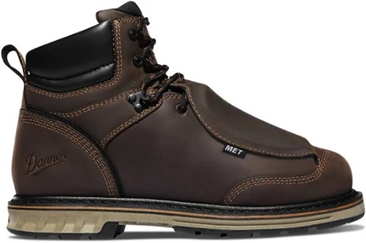
4. Danner Steel Yard work boots
Key features: Full-grain leather uppers, oil- and slip-resistant outsoles, electrical hazard protection
Sizes: 7 to 16
Price range: $171.99 to $452.53
The full-grain leather uppers of the Danner Steel Yard work boots have undergone multiple testing to ensure strength and durability. The footwear comes in a Goodyear welt construction that attaches the uppers to the outsoles for a stable and long-lasting connection.
The steel-toe safety boots also have oil- and slip-resistant outsoles and defined heels for versatile traction. They are also certified against electrical hazard. All these features make the Steel Yard one of the most comfortable work boots in the market.

5. HYTEST Rival work boots
Key features: Waterproof leather uppers, anti-fatigue midsoles, moisture-wicking lining
Sizes: 7 to 14
Price range: $179.99 to $255.00
The HYTEST Rival work boots feature waterproof full-grain leather uppers and have Tec-Tuff abrasion-resistant toes. The protective footwear also comes with moisture-wicking mesh lining to keep sweat from building up. The anti-fatigue footbed and foam midsoles absorb shock for improved comfort. The work boots are available in brown and black.
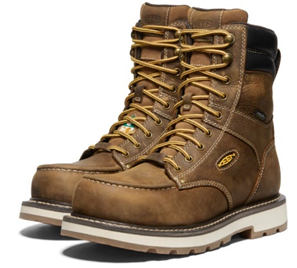
6. KEEN Utility CSA-Cincinnati 90 Degree work boots
Key features: 90-degree heel, carbon fiber toes, air-infused midsoles
Sizes: 7 to 15
Price range: $231.56 to $246.84
The KEEN Utility CSA-Cincinnati 90 Degree work boots feature a 90-degree heel, offering superior grip on ladders and soft surfaces. The safety footwear also comes with air-infused Lufttcell midsoles to ensure comfort for long hours on the job. The boots have carbon fiber toes that are 15% lighter than steel, offering both protection and comfort.
The continuous Goodyear welt construction ensures that the footwear holds up even under the harshest work conditions. KEEN Utility work boots also use barnyard-resistant leather for the uppers. The material provides more than twice the abrasion-resistance of traditional leather.
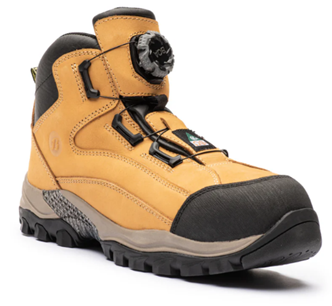
7. Mister Safety Shoe Bickz 805C work boots
Key features: BOA lacing system, Thinsulate-lined soles, electric shock protection
Sizes: 4 to 16
Price: $179.95
The Mister Safety Shoe Bickz 805C work boots have full-grain leather uppers and penetration-resistant outsoles. The protective footwear’s unique BOA lacing system ensures a snug fit and stays tied to provide all-day support. The medium-duty work boots feature rubber nitrile soles lined with Thinsulate for improved insulation. The composite-toe safety shoes provide protection against electric shock.
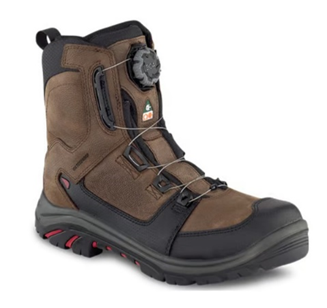
8. Red Wing Tradesman work boots
Key features: Waterproof leather uppers, slip-resistant outsoles, optional BOA lacing system
Sizes: 6 to 16
Price range: $140 to $344
The Red Wing Tradesman work boots are made of handcrafted premium leather. The additional layer at the toes and heels protects against daily wear and tear. The footwear uses slip-resistant Versatrax for the soles and features non-metallic safety toes. The work boots are waterproof, puncture-resistant, and protect against electrical hazards. A CSA-compliant BOA lacing system can be included to provide a secure fit and allow the wearer to make micro-adjustments throughout the day.
The footwear combines the safety features of protective boots and the functionality of hiking shoes. This makes it among the most comfortable work boots in the market.
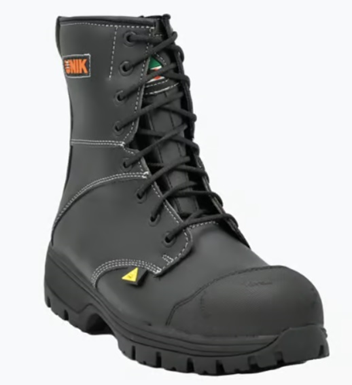
9. Unik Safety Chemik 8” Large 5E work boots
Key features: Designed for large feet, chemical- and slip-resistant outsoles, anti-stress insoles
Sizes: 6 to 13 (5E)
Price range: $329.95 to $345.95
The Chemik 8” Large 5E work boots from Unik Safety are designed to provide a comfortable fit for large foot sizes. The footwear is water-resistant and features anti-stress insoles for improved dryness and comfort. The boots’ Vibram Dry Ice outsoles protect against chemical exposure and prevent slips on icy surfaces. The composite toe and plate meet CSA Z-195-14 safety standards.
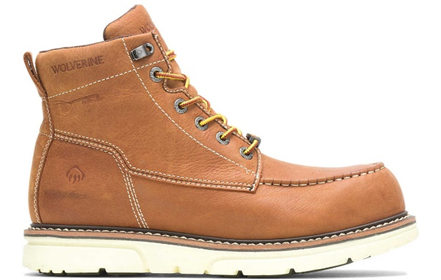
10. Wolverine I-90 DuraShocks work boots
Key features: Waterproof leather uppers, cushioned PU insoles, wedge outsoles
Sizes: 7 to 14
Price range: $123.22 to $234.00
The Wolverine I-90 DuraShocks work boots have premium waterproof full-grain leather uppers. The moisture-wicking membrane lining is designed to keep the feet dry. The cushioned PU insoles provide comfort even after standing for long hours.
The footwear can come with a CarbonMAX composite toe for enhanced protection against impact. The wedge outsoles spread the wearer’s weight out more evenly and are generally more comfortable compared to heeled boots.
Is safety footwear required in Canada?
Occupational health and safety regulations in most jurisdictions require workers to wear safety footwear if there’s a risk of foot injury or electric shock in the workplace. The shoes must meet CSA Z195:14 safety standards for protective footwear.
Read more: Essential personal protective equipment for electrical workers
The Canadian Centre for Occupational Health and Safety (CCOHS) lists the most important things employers need to know about safety footwear in the workplace:
☐ If foot protection is required, you must set up a complete foot safety protection program. This includes selection, fit testing, training, maintenance, and inspection.
☐ Safety footwear is designed to protect the feet against a range of injuries. The three most common types of foot injuries are impact, compression, and puncture.
☐ Choose safety footwear based on the risks your business faces. Refer to CSA Standard Z195-14 or other standards required in your area.
☐ Select CSA-certified footwear or other certified footwear permitted in your area. Make sure that it has the proper rating for the hazards your workers face and has soles suited to the working conditions.
☐ Use metatarsal protection (top of the foot between the toes and ankle) where there is a potential for injury.
Learn more about the PPE requirements in your industry in this essential guide to personal safety equipment.
How can you find the most comfortable work boots for your team?
There are several factors that you need to consider when choosing the right work boots for your construction and industrial tasks, including:
1. Risks
The work boots you choose must protect against the hazards your workers face. CCOHS provides a list of possible foot risks employees may encounter in the workplace:
- Falling objects
- Materials or equipment that may roll over the feet
- Sharp and pointed objects
- Harmful materials that workers use or handle
- Corrosive or irritating substances
- Explosive environments, including the risk of static electrical discharges
- Sensitive electronic components
- Energized conductors of low to moderate voltage (220 volts or less)
- Walking on surfaces where workers may be exposed to loose ground cover, slipping, extreme temperatures, and harmful chemicals
- Rough terrain or uneven walking surfaces that can cause ankle injury
- Water or other liquids that may penetrate the footwear and injure the foot
- Rotating or abrasive machinery, including chainsaws and grinders
Find out how you can prevent foot injuries in the workplace in this guide.
2. Fit
To ensure that the work boots provide a snug fit, CCOHS recommends that your workers do these simple tests:
- Try on the new boots around midday as the feet normally swell during the day.
- Walk in the new footwear to ensure that it’s comfortable.
- Work boots must have ample toe room, ideally about 12.5mm from the front. Don’t expect the shoes to stretch with wear.
- Make an allowance for extra socks or special arch supports. Try on the new boots with these accessories when buying the shoes. Check with the manufacturer to see if adding inserts impacts the level of protection.
- The boots must fit snugly around the heels and ankles when laced.
- The boots must be laced up fully. High-cut boots provide better support against ankle injury.
3. Symbols and markings
Safety footwear comes with different symbols and markings to allow you to determine if it’s appropriate for the industry or task. Here’s a guide from CCOHS:
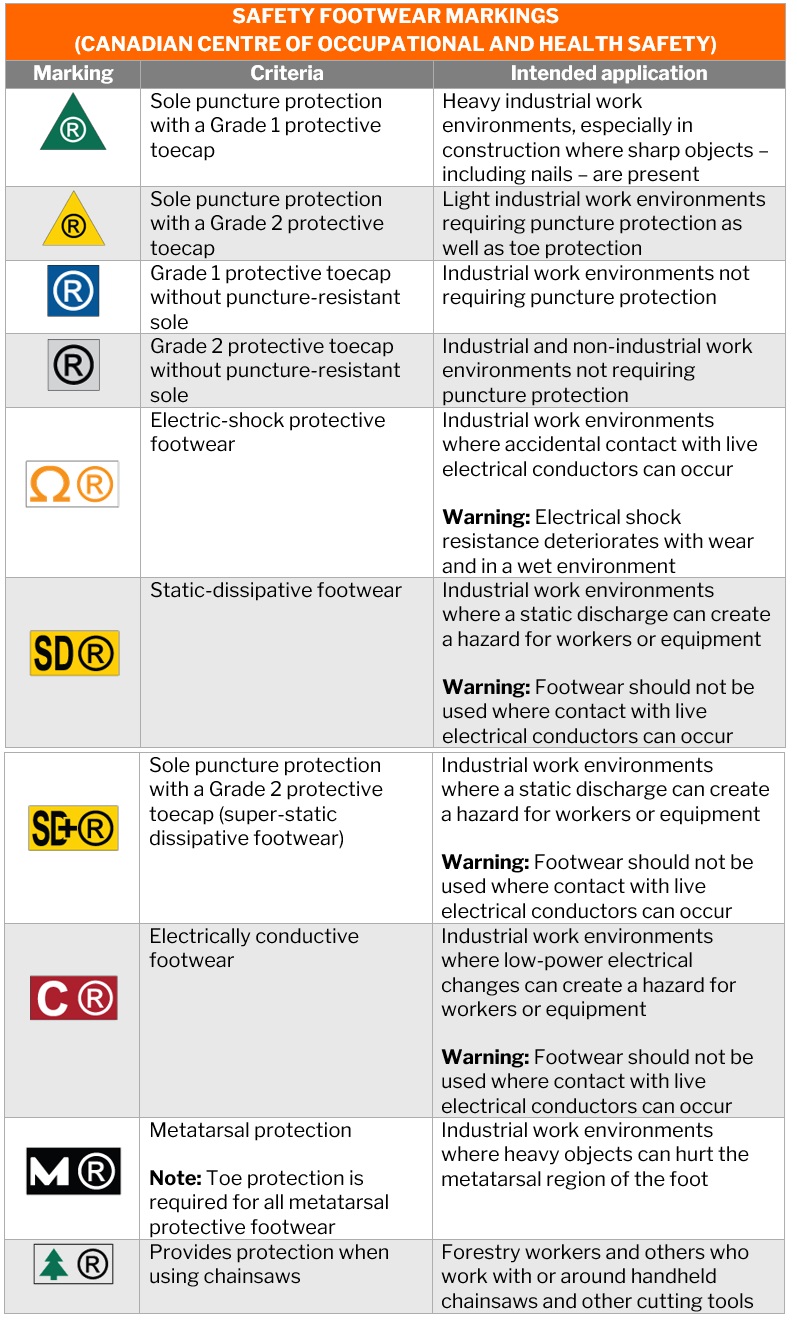
Safety footwear is also marked to show the level of slip resistance and type of toe protection. These markings may be found on the packaging, product sheet, or the shoes themselves.
You can find the answers to the most pressing questions about foot protection in the workplace in this guide.
Work boots FAQs
Why do my feet hurt so bad in work boots?
Poorly fitting work boots or wearing shoes that need repair are among the top reasons for foot discomfort. Footwear with pointed toes and high heels can also cause the feet to hurt.
Apart from the shoes, the type of flooring in the workplace can affect foot comfort. Hard concrete floors have an impact like a hammer, pounding on the heels at every step. Slippery floors, meanwhile, can result in various foot injuries, including sprained ankles and fractured bones.
How often should you replace work boots?
Ideally, work boots must be replaced at least every six to 12 months, depending on how often and how long they are worn during the day. If the footwear is showing signs of disrepair, it’s also time to get a new pair.
Visit our Product Resources page for more news and information about workplace safety equipment and devices in Canada.
Do you have tips on how to make work boots more comfortable? Let us know in the comments.
Related Articles:
The best safety glasses for construction workers
The best hard hats to recommend to your construction team
The best work gloves for heavy-duty protection
The best hearing protection for construction workers
The best welding helmets for industrial protection
Roof safety equipment: an essential guide for roofers in Canada
The best ear protection for loud machinery
The 10 best respirators for painting projects
The best welding respirators for heavy-duty tasks


